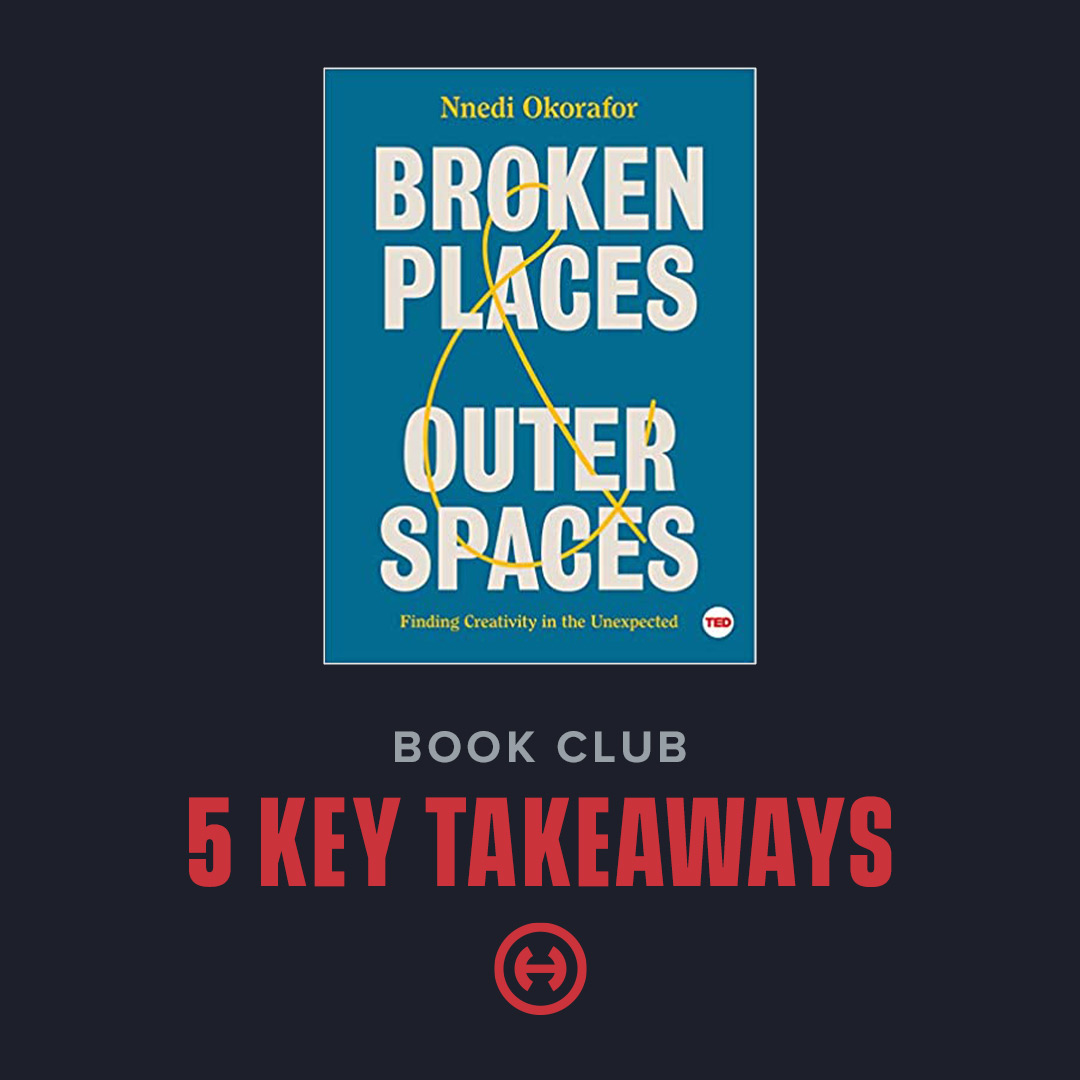At our latest agency book club, we discussed “Broken Places & Outer Spaces: Finding Creativity in the Unexpected.” In the book, Nnedi Okorafor takes us along her journey from star athlete to paralyzed patient – showing us how our biggest perceived weaknesses have the potential to inspire us to dig deep, get creative and leave our limits behind. If you have time for some reading and digging in, pick up a copy of the book here. If not, here are five fast takeaways.
1. Scribble to unlock something new.
Scribbling means creating carelessly and without intention. While that’s great, Okorafor suggests going beyond the usual forms of scribbling to stretch ourselves. What forms of expression could you explore to get outside your creative comfort zone, e.g., drawing, writing and improvising?
2. Gild your mistakes with gold.
Kintsugi is a Japanese art form that uses gold to repair broken objects, which highlights the crack or the break in a piece – rendering the object stronger and more beautiful than it was before. Sure, growth is uncomfortable and often involves mistakes, but have you considered the ways your mistakes have helped and can continue to help make you stronger and more beautiful?
3. Channel your pain into creation.
While Okorafor was in the hospital, she sculpted a woman out of clay to distract herself from her physical pain. The clay lady ends up inspiring her work as a writer and later becomes a character in one of her books. What are some ways you leverage creativity to push through pain as well as personal and professional challenges?
4. Use technology to become a cyborg.
While experiencing paralysis, Okorafor referred to herself as a cyborg, a being whose natural abilities were augmented by technology. While this sounds like science fiction, the truth is that humans are always using technology to further their capabilities in work and in life. What are some new and interesting ways you could use technology to enhance your natural abilities?
5. Lean into what you love and tree.
A gifted athlete in her youth, Okorafor reflects on the sensation of “treeing,” a term used in tennis to describe when a player is in the zone and playing at peak performance. This sensation is actually relaxing for the brain and acts as a reward system to incent and fuel similar kinds of work. When do you feel most in the zone? How can you lean into that kind of work?
Curious to learn more? Pick up Okorafor’s memoir – or consider watching her Ted Talk about how science fiction and Afrofuturism explore the “what if” of our world and galaxy.
